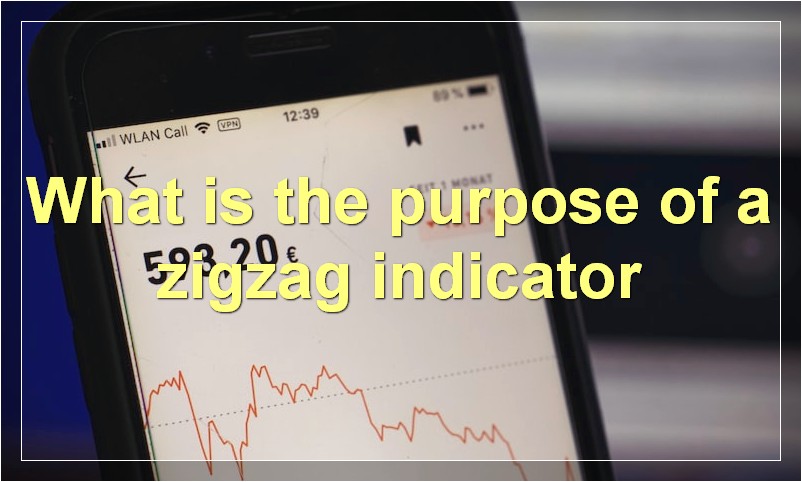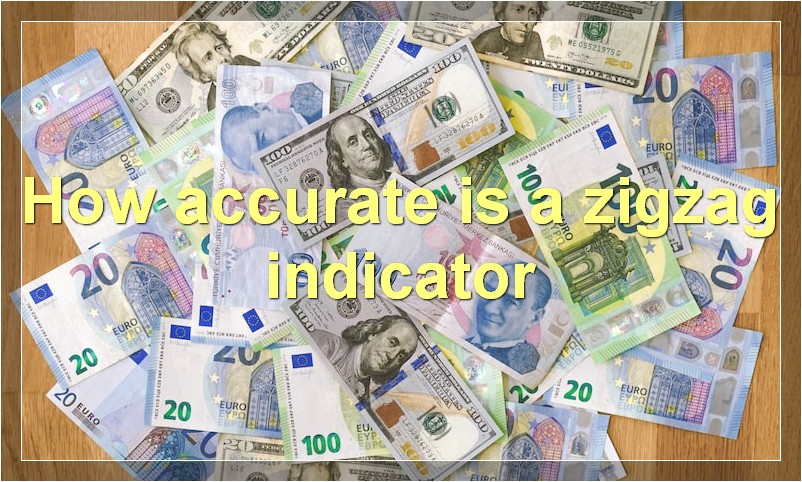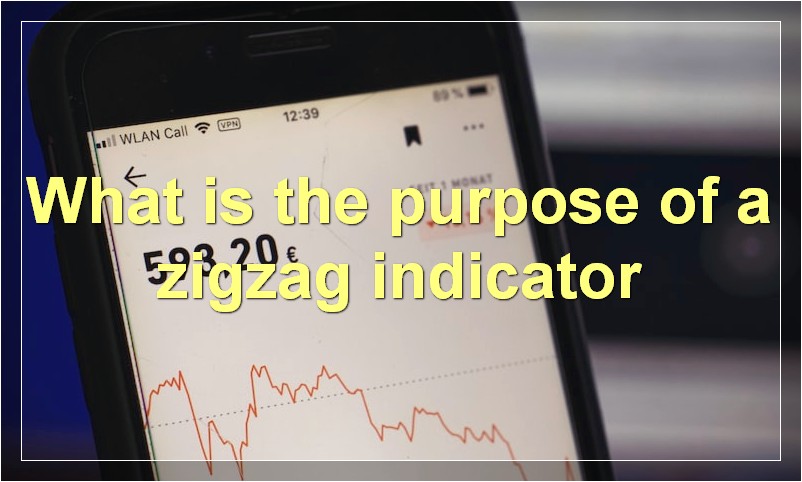Some day traders swear by zigzag indicators while others avoid them like the plague. So, what’s the truth? Let’s take a look at the pros and cons of using a zigzag indicator.
What is a zigzag indicator
A zigzag indicator is a technical analysis tool that is used to identify whether a security is currently in an uptrend or downtrend. The zigzag indicator is made up of a series of peaks and troughs. The peaks represent the high points of the security, while the troughs represent the low points. If the security is in an uptrend, the zigzag indicator will be positive, and if the security is in a downtrend, the zigzag indicator will be negative.
What is the purpose of a zigzag indicator

The purpose of a zigzag indicator is to help identify trend reversals in the market. By looking for patterns in the price action, traders can use the zigzag indicator to make better-informed decisions about when to enter and exit trades.
How is a zigzag indicator used
A zigzag indicator is a technical analysis tool that identifies price reversals using a series of highs and lows. These highs and lows form a zigzag pattern that can be used to predict future price movements.
The zigzag indicator is created by drawing a line between two successive highs or lows. The indicator will then plot a series of zigzag lines that connect these highs and lows. The distance between each high and low will vary, but the overall trend should be downward if the market is in a downtrend, or upward if the market is in an uptrend.
The zigzag indicator can be used to identify potential reversal points in the market. When the indicator forms a series of lower highs and lower lows, it is called a bearish zigzag. This signals that the market may be ready to reverse from an uptrend to a downtrend. Similarly, when the indicator forms a series of higher highs and higher lows, it is called a bullish zigzag. This signals that the market may be ready to reverse from a downtrend to an uptrend.
The zigzag indicator can also be used to confirm trends. For example, if the indicator is forming a series of lower highs and lower lows in a downtrending market, this confirms that the market is indeed in a downtrend. Similarly, if the indicator is forming a series of higher highs and higher lows in an uptrending market, this confirms that the market is indeed in an uptrend.
What are the benefits of using a zigzag indicator
The zigzag indicator is a technical analysis tool that can be used to identify trends in the market. The indicator is based on price action and uses a series of highs and lows to plot a line on the chart. The zigzag indicator can be used to trade both long and short-term trends.
The main benefit of using the zigzag indicator is that it can help traders to identify market trends. The indicator can also be used to confirm price patterns and trend reversals. The zigzag indicator is a versatile tool that can be used in conjunction with other technical indicators to make trading decisions.
What are the drawbacks of using a zigzag indicator
There are a few drawbacks to using a zigzag indicator. First, the zigzag can be lagging and give false signals. Second, the zigzag is not always accurate, especially in choppy markets. Third, the zigzag does not take into account price action or candlestick patterns.
How accurate is a zigzag indicator

A zigzag indicator is a tool that is often used by traders to help identify trends in the market. The indicator can be used to spot both up and down trends. While the zigzag indicator is a helpful tool, it is important to keep in mind that it is not 100% accurate. There are times when the indicator will give false signals.
Is a zigzag indicator worth using
There are many indicators that traders use to make decisions about when to buy or sell a stock. Some indicators are based on price, others on volume, and still others on a combination of both. The zigzag indicator is one that is based on price, and it can be a helpful tool for traders to use.
The zigzag indicator is basically a moving average that only moves when the price of the security moves by a certain percentage. For example, if the zigzag indicator is set at 2%, then it will only move when the price of the security moves up or down by 2%.
The advantage of using the zigzag indicator is that it can help traders to see trends that might otherwise be hidden. By filtering out the noise, traders can get a better sense of when a stock is truly trending up or down.
The downside of using the zigzag indicator is that it can sometimes give false signals. If a stock is bouncing around within a tight range, the zigzag indicator may give the impression that it is trending when in reality it is not.
Overall, the zigzag indicator can be a helpful tool for traders to use, but it is not perfect. Like all indicators, it should be used in conjunction with other technical analysis tools in order to make the most informed trading decisions possible.
How often do zigzag indicators generate false signals
Zigzag indicators are a popular tool among technical traders, but they are not without their criticisms. One of the most common complaints is that zigzag indicators often generate false signals.
There is no definitive answer to how often zigzag indicators generate false signals, as it depends on a number of factors, including the time frame and the specific parameters used. However, it is generally agreed that false signals are a relatively common occurrence with this type of indicator.
False signals can be frustrating for traders, as they can lead to losses if trades are entered based on them. However, it is important to remember that even the best indicators will occasionally generate false signals. As such, it is important to use other forms of technical analysis to confirm any signals generated by a zigzag indicator before entering a trade.
What types of traders benefit most from using a zigzag indicator
There is no one-size-fits-all answer to this question, as the type of trader who benefits most from using a zigzag indicator depends on their individual trading style and goals. However, some traders who may find a zigzag indicator particularly useful include day traders who are looking for short-term market reversals, and swing traders who are seeking to identify longer-term trend changes.
Can a zigzag indicator be combined with other technical indicators for greater accuracy
A zigzag indicator is a technical indicator that can be used to help identify trends in the market. When combined with other technical indicators, it can help to provide a more accurate picture of what is happening in the market.

